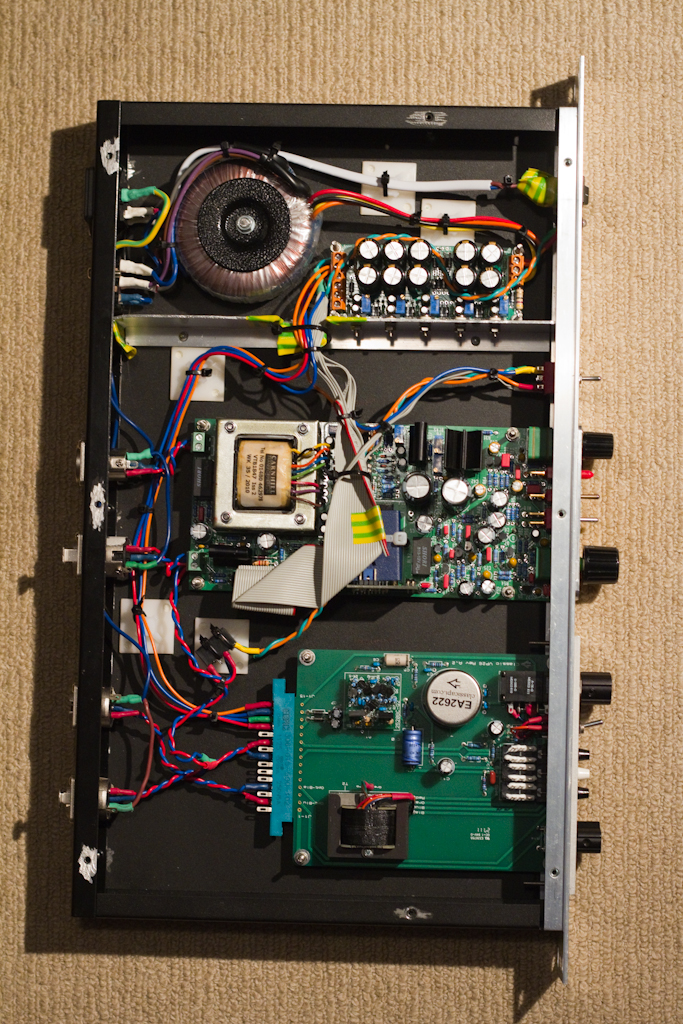Your t-pad looks to be wired correctly. I would double check the lead colors on the output transformer to make sure they are right.
You don't need to remove the pushbutton switches. Just reheat the solder/pin area until the solder becomes molten again. You can add just a dab of fresh solder if need be. Try to only heat a minimum of time.
There is an in between with the opamps. The problems can be coming from there. It is definitely best to have a known good working amp to check your preamp build with. Once you know you are set there, then you can try an opamp build. Right now, you may have too many variables to really diagnose what is going wrong. Maybe a friend who is close can loan you one?
I also like to limit the attempts to fix things to one thing at a time. If you do more than that, you will never know what the exact problem was.
Cheers, Jeff
You don't need to remove the pushbutton switches. Just reheat the solder/pin area until the solder becomes molten again. You can add just a dab of fresh solder if need be. Try to only heat a minimum of time.
There is an in between with the opamps. The problems can be coming from there. It is definitely best to have a known good working amp to check your preamp build with. Once you know you are set there, then you can try an opamp build. Right now, you may have too many variables to really diagnose what is going wrong. Maybe a friend who is close can loan you one?
I also like to limit the attempts to fix things to one thing at a time. If you do more than that, you will never know what the exact problem was.
Cheers, Jeff





































![Soldering Iron Kit, 120W LED Digital Advanced Solder Iron Soldering Gun kit, 110V Welding Tools, Smart Temperature Control [356℉-932℉], Extra 5pcs Tips, Auto Sleep, Temp Calibration, Orange](https://m.media-amazon.com/images/I/51sFKu9SdeL._SL500_.jpg)











